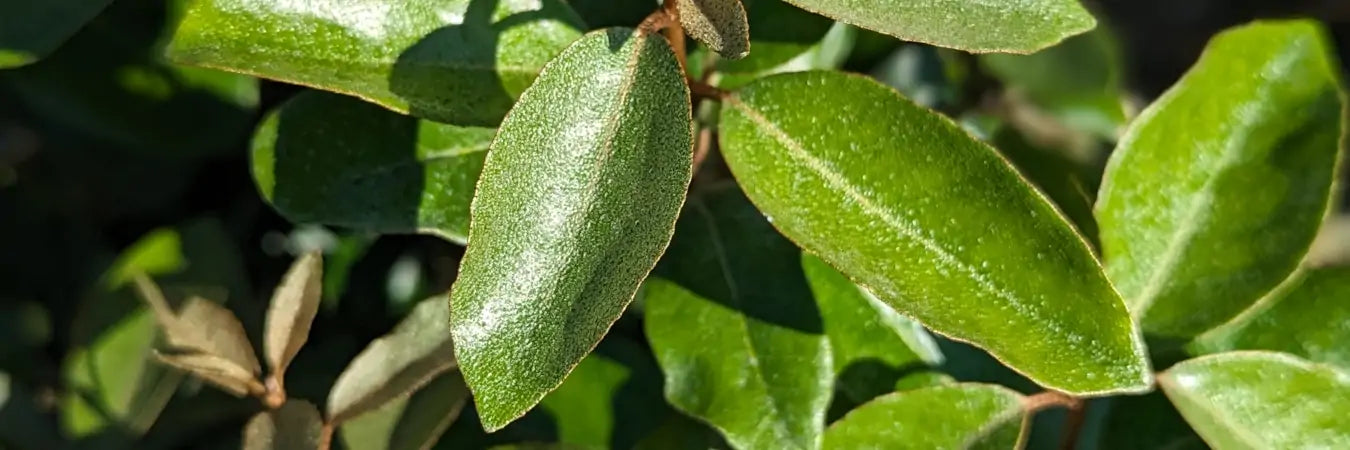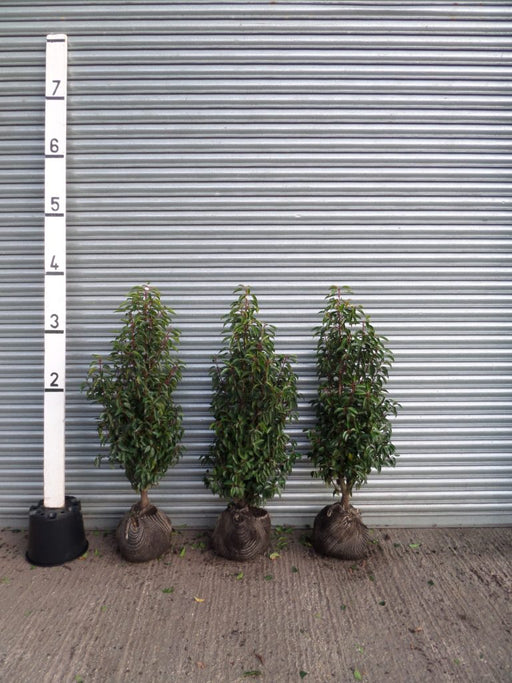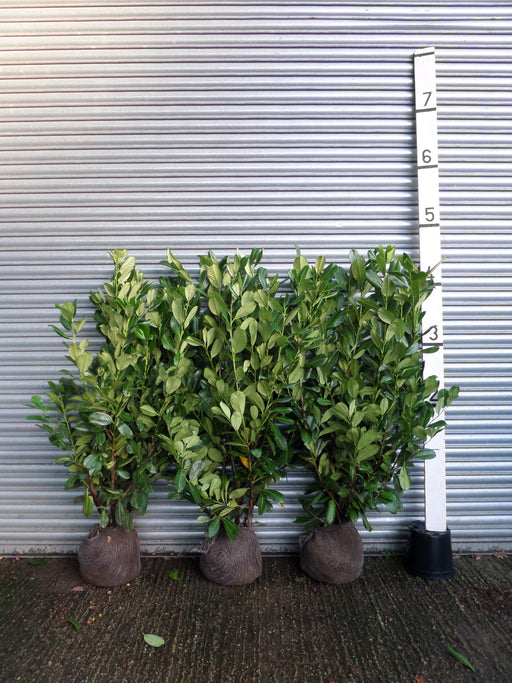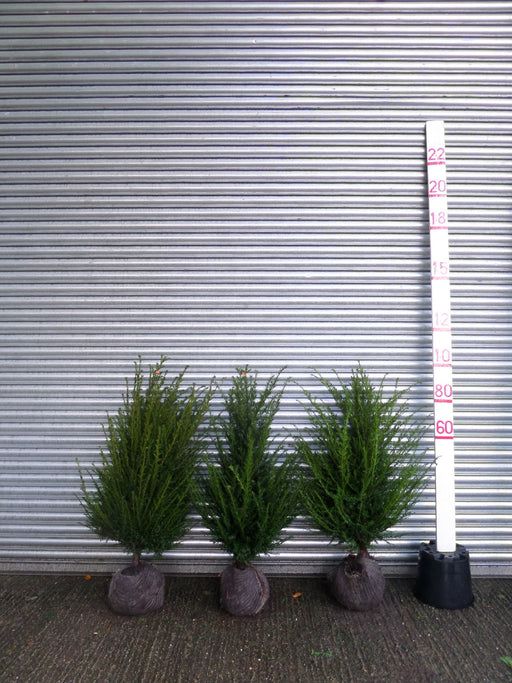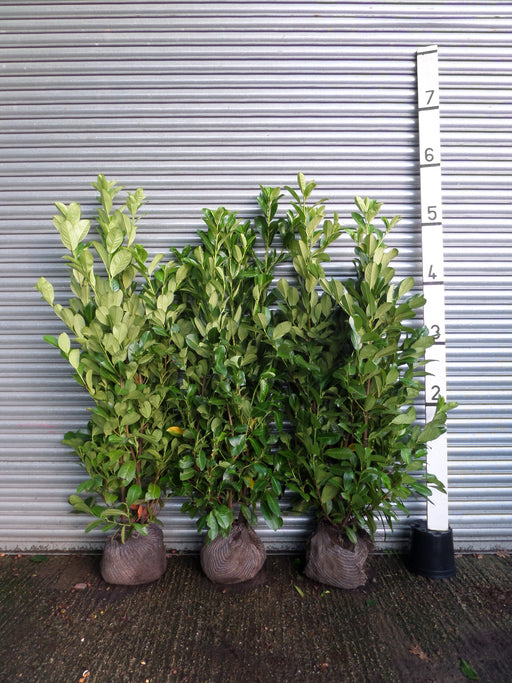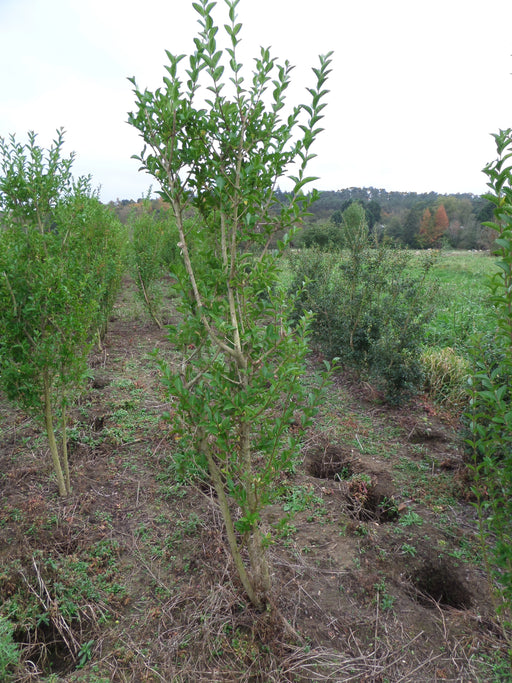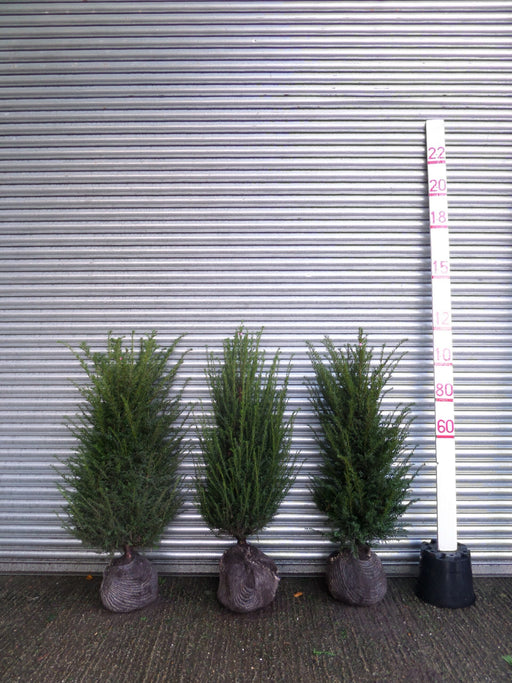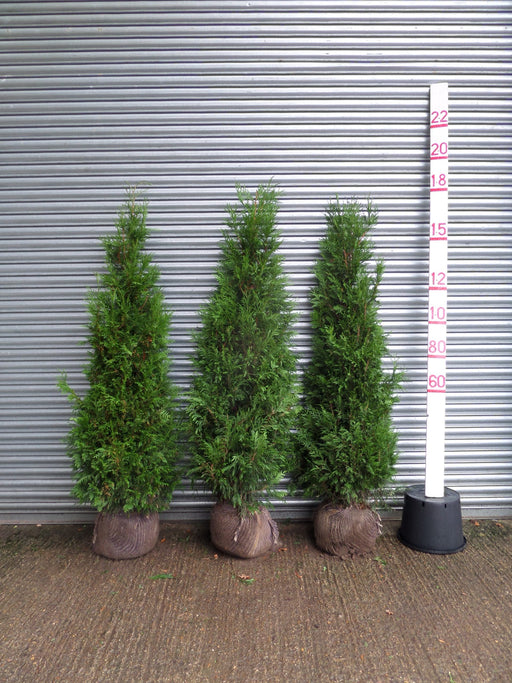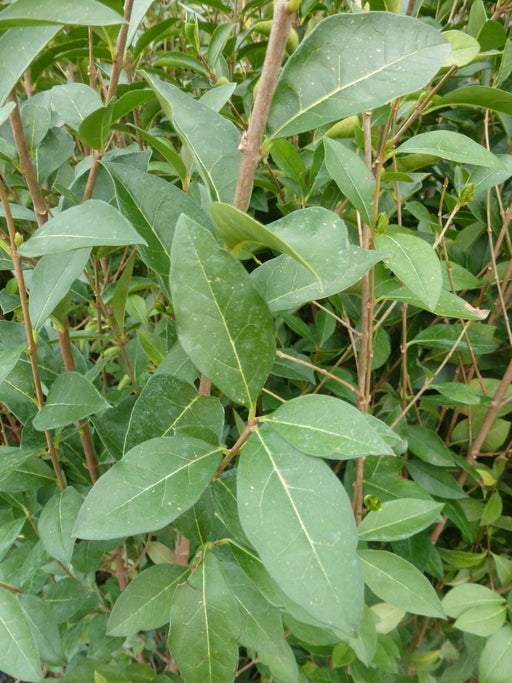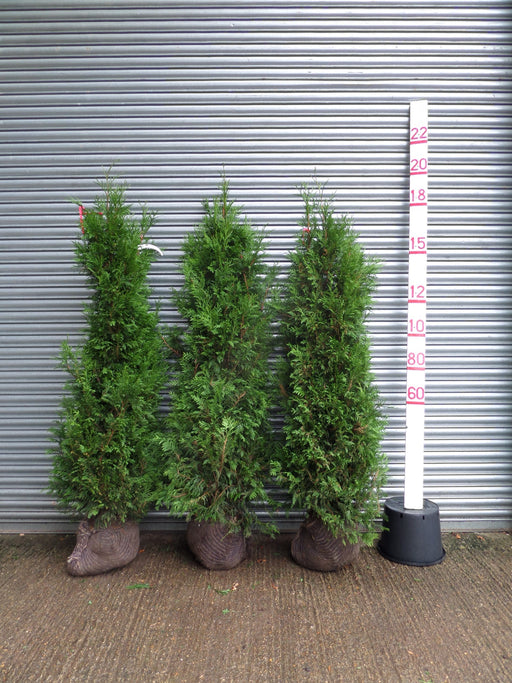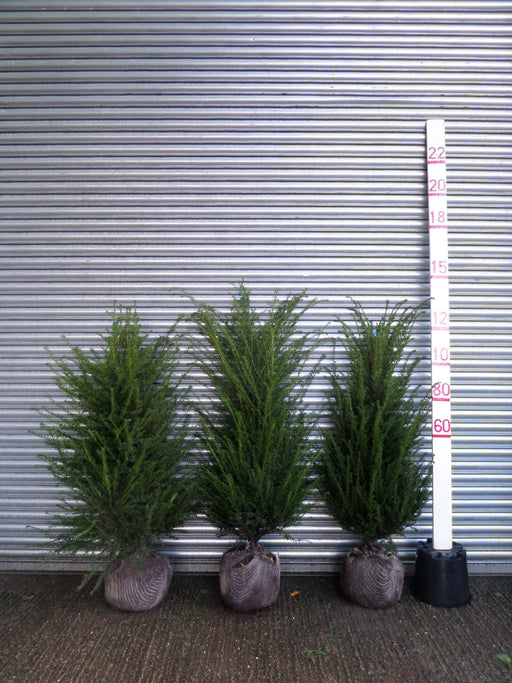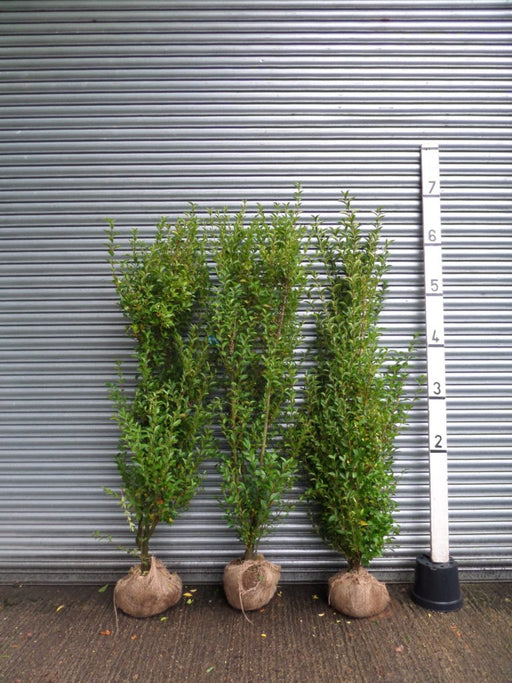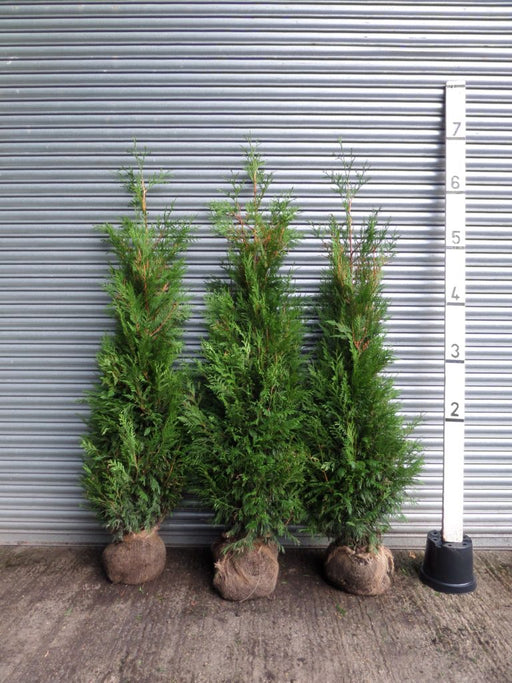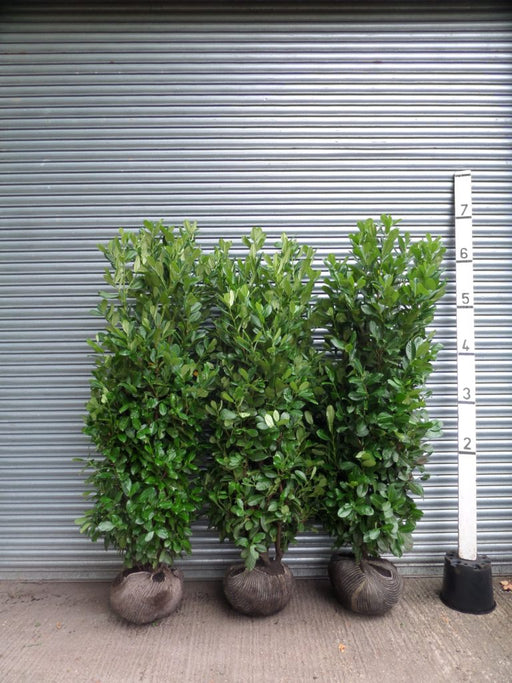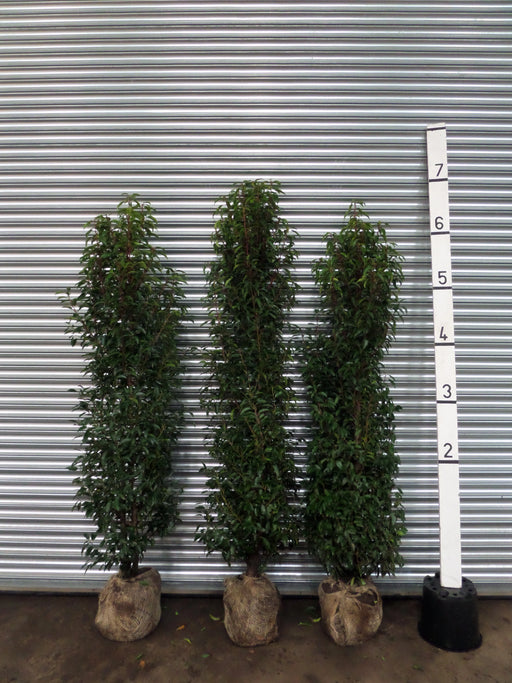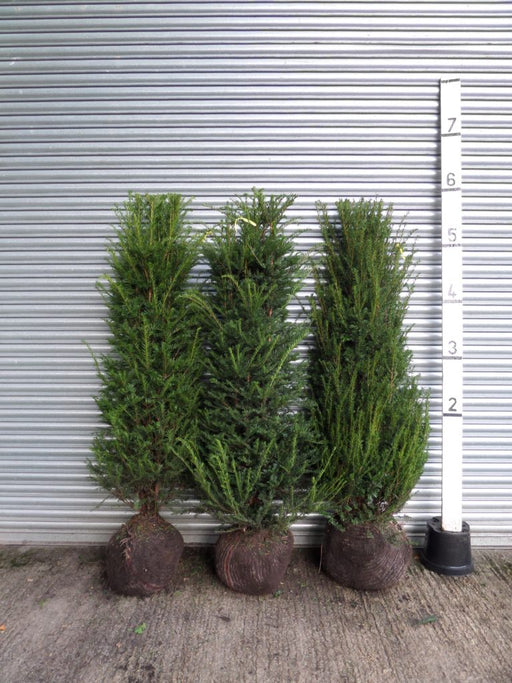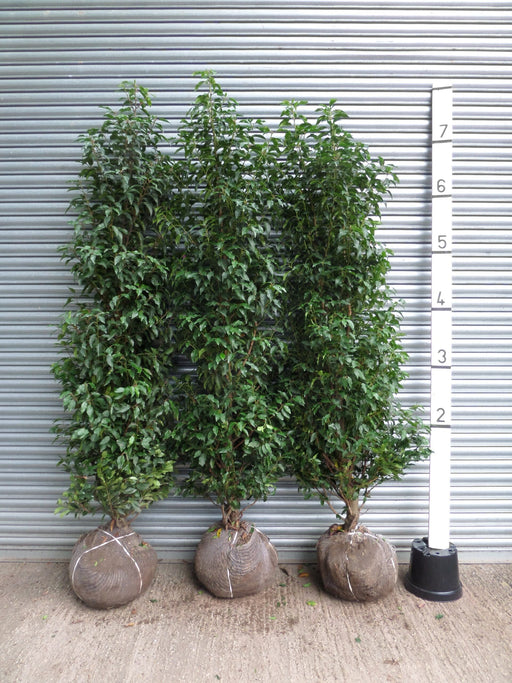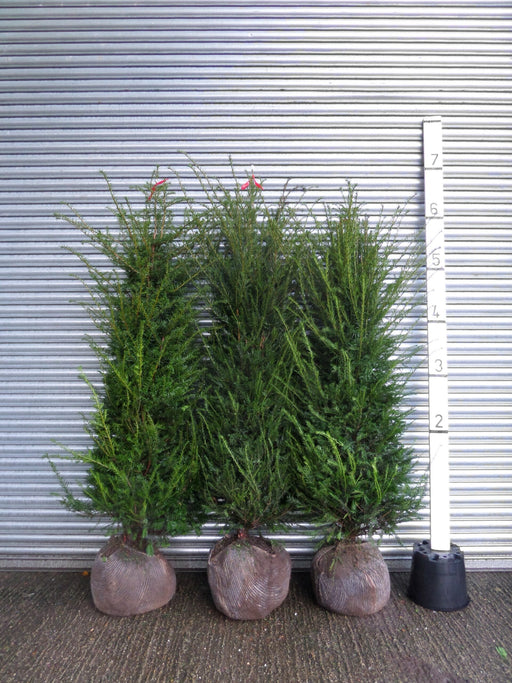Cost-Effective, Taller Hedging Plants
Our range of root balled hedging plants encompasses larger sizes of Laurel, Portuguese Laurel, Privet, Holly and Thuja – supplied throughout the colder months of the year. Rootballs are not always for the faint hearted and some of the larger sizes can weigh a significant amount so make sure you have plenty of help on hand to assist with planting or moving them through to where they need to be planted. Although having a large Rootball can make them difficult to handle, the more soil that
is around the roots, the better its chance of successful establishment in your garden.
Looking for something in particular?
Whatever you’re looking for, our team are on hand to help you transform your outdoor space with our extensive range of root ball hedging plants, available to buy online. Give us a call on 01252 714552 to start the conversation. Alternatively, if you would like further guidance as to which plants would be best suited to your requirements, get in touch today, we're here to help.
Rootballed Hedging Plants: FAQs
What is root ball hedging?
Root ball plants are field grown plants that are dug out of the ground during the dormant season (October to March) but the key difference between them, bare root and container grown plants is that root balls are lifted with a ball of soil around the roots which is then tied up with a piece of hessian sacking to protect the roots while they are out of the ground. They are then planted in your garden with the biodegradable hessian sacking still around the roots which quickly rots away while new root growth easily pushes through the hessian. It is a mistake to try and remove the hessian when planting as it can cause more damage to the roots if the soil falls away.
When can you plant root ball hedging?
The best time to plant root balls is between October and April, with October and November providing the ideal window of opportunity. With mild temperatures, consistent rainfall and reduced competition from weeds, planting hedges in autumn gives them sufficient time to establish themselves before the harsh winter conditions arrive. Well-established hedges, planted during the root ball season, are better equipped to endure winter cold, wind and frost. Find out more about when to plant a hedge. However, please be aware that the rootball season is not set in stone and the start and end of the season vary each year depending on what the weather is doing.We will only start lifting rootballs ready for sale when we are comfortable that the plant has gone dormant and is not showing any signs of growth to ensure that your new Rootball hedge has the best chance of survival in your garden.
How do you plant root ball hedge plants?
Are you wanting to plant your root ball hedging for privacy? Or to create a more aesthetically pleasing garden space and add more greenery? Having a plan in place will make your life easier and more focused. Once the why for planting your hedge has been determined, ensure you are choosing the best hedge plant for the job. Read our guide on how to choose the right hedge for guidance. From there, you will need to consider where you want your hedge to go. For instance, if you want to plant your hedge next to a fence for greater privacy, you will need to factor in height, width, density and space around the fence.
Once you’ve considered the steps above – it’s time to get planting! From soil preparation to watering, here’s how to plant a hedge.
What are the most common types of root ball hedging plants?
Rootballed Laurel Hedging
Laurel hedging (Prunus laurocerasus) is sometimes referred to as Cherry Laurel or Common Laurel and is one of our most popular varieties of hedging plants, for they are easy to grow, easy to look after, highly tolerant and are a haven for wildlife. With its vibrant and glossy dark green leaves, a laurel hedge provides a good screen and its quick growth rate means that an instant hedge can be achieved quickly.
Rootballed Portuguese Laurel Hedging
Portuguese Laurel (Prunus lusitanica) is also known as Portugal Laurel and although it has been around for a long time, has only recently gained significant popularity as a mainstream hedging plant in the last twenty years or so. It forms a dense evergreen hedge with dark green leaves and produces a proliferation of white flowers in late spring. Not to be confused with common laurel, Portuguese Laurel makes a dense hedge which clips well and looks more formal.
Rootballed Thuja Hedging
Root balled Thuja hedging is a more cost effective solution to planting a Thuja hedge without the cost of buying pot grown plants. With its olive green shiny foliage, Thuya is a useful, slower-growing alternative to Leylandii. With its needle like leaves, it visually looks very similar to Leylandii, but the foliage gives off a pleasant aromatic smell when crushed or cut.
Rootballed Privet Hedging
Privet hedging is a very traditional English form of hedging. It grows relatively quickly and is tolerant of most soil types and clips easily to form a neat, dense and tidy hedge. Privet is semi-evergreen meaning that it generally retains its leaves all winter except in periods of prolonged cold when it can lose them.
Yew Hedging
Yew hedging (Taxus baccata) has been used for centuries as a hedging plant and being native is almost synonymous with the English country garden. It grows incredibly tightly meaning that you can grow a very tight compact hedge which clips exceptionally well to create a crisp pleasing look to your hedge. However, be aware that Yew can be the trickiest hedging plant to establish in a garden as it is very intolerant of clay or remotely wet soils. Being slow growing, it can take some months to show the effects of sitting in ground that is too wet, when it is often too late to do anything about it. Frustratingly, the symptoms of a Yew hedge that is sitting in ground that is either too dry or too wet are very similar, making it difficult to diagnose problems with it. That being said, if you have lighter sandy soils, Yew is a wonderful plant for smart formal hedging.

